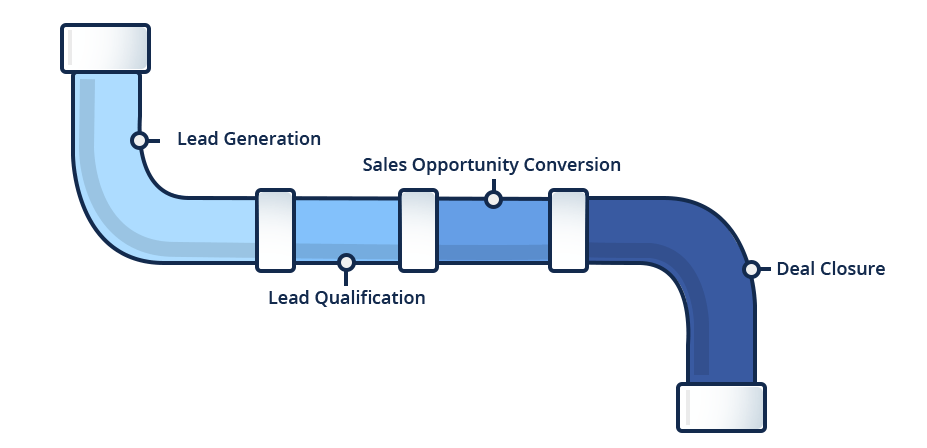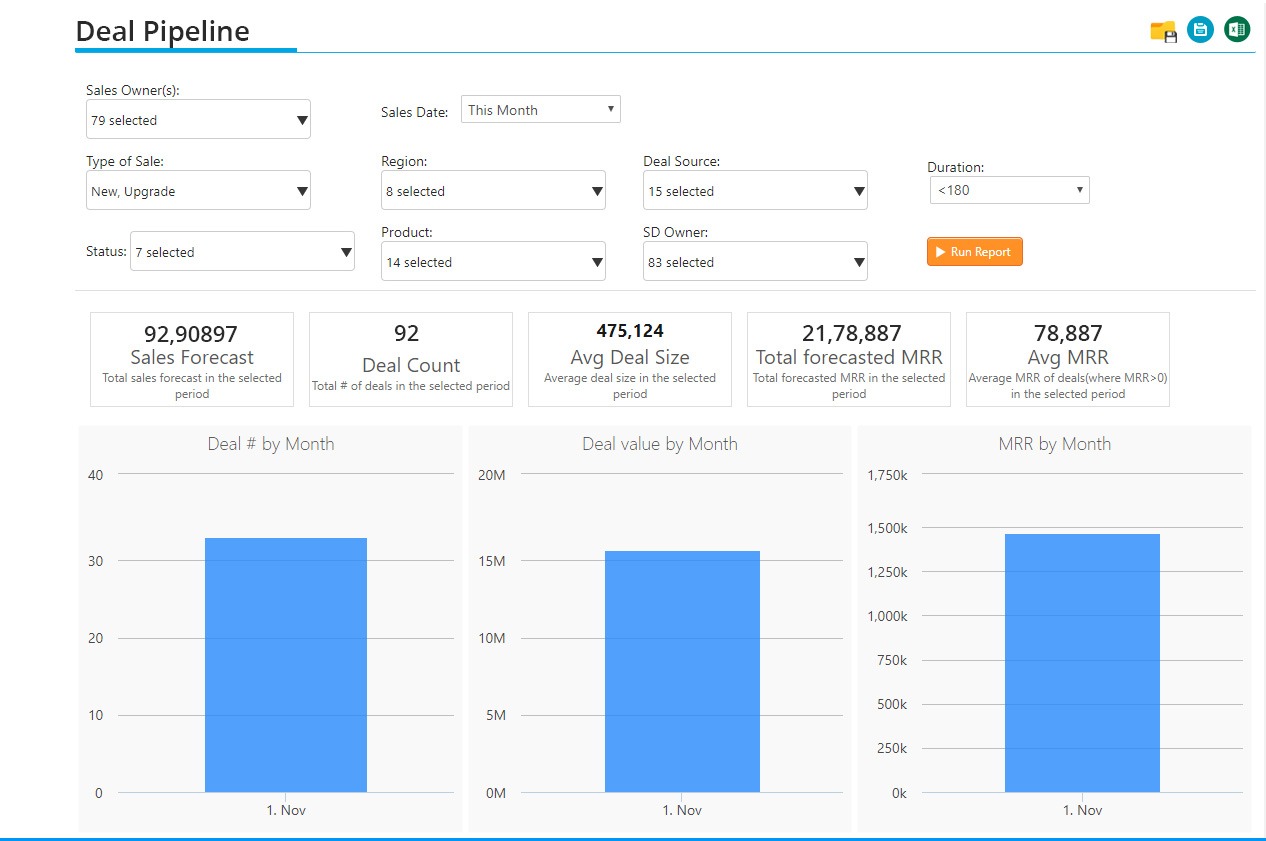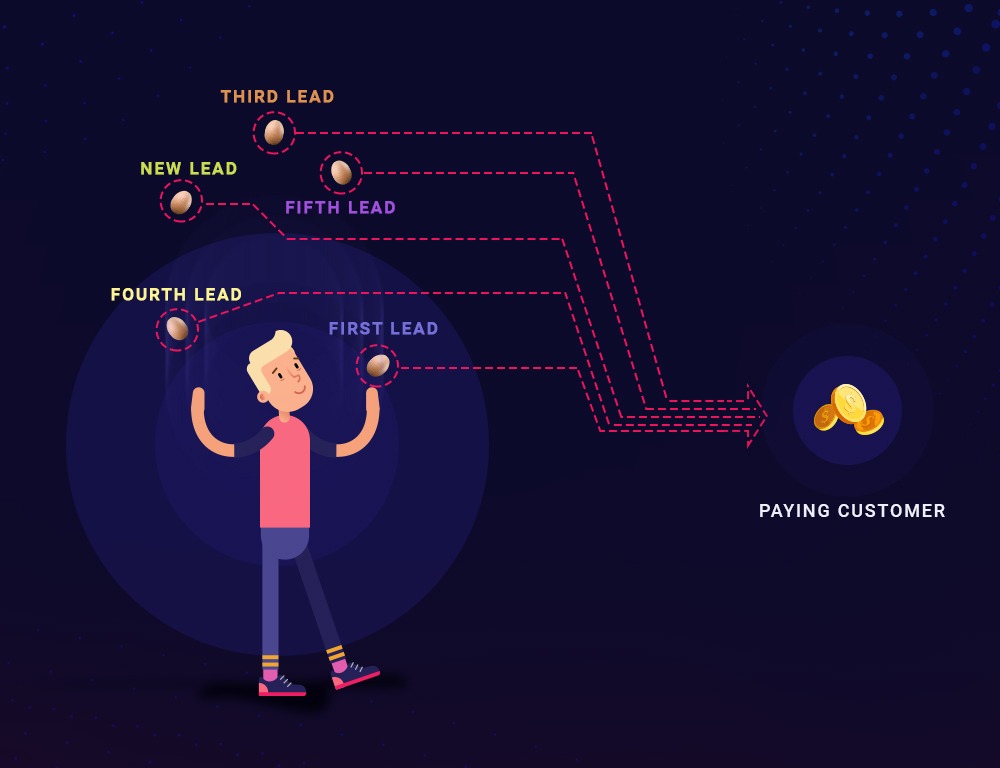A sales pipeline is (in theory) a very simple process. You simply take a person with a slight interest in what you are doing and turn them into a paying customer. The sales pipeline is a predetermined series of steps that help you to do this and it is often looked upon as a graphical chart.
Let’s take an example. Meet Shubh, my colleague and Head of solutions, North America region

He says
“Before identifying my sales pipeline, for me, the important thing is what my revenue target. So if my revenue target is $50,000 MRR in a quarter, I am not gonna waste my time to chase accounts that can give me 800-1000 dollar MRR. And would rather go behind the ones that can give me north of $5000 MRR”
Then once the revenue target is identified, I pick up a region/sub-industry. Before going into any market it is important to have region focus so that the referrals can create a repeatability of the customers. Once that is done, now I pick up the companies/leads that can help me reach the revenue target is the shortest possible time. I target them/get them targetted. Bring them to demos.
And do a sufficient number of demos so that probable closure is equal to 3-4 times of my target. Basically considering the closure rate of 25-30%. This is how deals go into the sales pipeline.”
He adds
“This is a constant process so it never stops. One can never know when does a deal go out of the pipeline, so you have to keep pushing numbers in the pipeline.”
If you imagine the sales pipeline to be a four-step process

wherein you first obtain leads, secondly qualify them to ensure you are selling them the right thing, thirdly work them into a sales opportunity, and finally close the deal, then you won’t see any issue at all.
Until you gain a second lead.
While you’re working on your first lead and are nearly in step 3, your new lead needs to begin at step 1. But let’s be honest, that’s easy. It’s as simple as juggling with two eggs – you have two hands, you can do it easily. You keep both eggs in the air, and all is well.
And then you gain a third lead.
It’s not so easy to keep that third egg in the air, but with some practice and hard work, you get the hang of it. If only that first lead would hurry up and let you close the deal.
And then leads four and five come along at the same time.
To juggle with five eggs will take all your time, energy, and skill. The chances are that at some stage, you’re going to drop an egg, and all that work will have been wasted. The real problem comes when you realize that you are losing control of just one egg. You have to adjust everything so you can catch it…and drop every other egg you were juggling.

In your imagination, it looks like your next meal is scrambled eggs. In the business world, your sales pipeline has just broken, and you’re going to have to start again right from the beginning.
Keep the flow going
In our previous analogy, leads (or eggs) came through the pipeline one or two at a time. If you are running a high-velocity business, you might be hoping for tens or hundreds of leads every single day.

The key to constructing a solid sales pipeline of this size is to constantly be aware of where every lead is in the pipeline, and deal with them according to their position. The hard part is keeping track of them all.

Using an integrated pipeline management tool or CRM software will aid you in this endeavor. Not only will you be able to see where every lead is, but you will also be able to plan your next steps to guide them from being a lead into an opportunity and finally, into a paying customer.

The absolute worst thing you can do is lose track of the potential customers in your sales pipeline, as they may already be in someone else’s pipeline – when you let them go, somebody else is just waiting to catch them.
To help with this, many companies will strengthen their salesman count. The more people who work for your company, the more people there are to deal with the leads – simple, right?
Not necessarily. Imagine there were two of you juggling with six leads – or eggs – and you decide to swap a lead with each other. If you’re juggling with eggs, how do you do it? A carefully choreographed maneuver is required for each person to toss one egg to the other at the same time. Get it wrong, and both eggs get dropped.

Using a CRM system with powerful pipeline management allows you to not only know where each lead is in the sales pipeline but also allows you to keep other important details about them – what web pages they are visiting, what their motivation and interest lie in, what will be the best time to call them and more. This makes it easy to pass to another rep, or alternatively to refresh your own memory when you aren’t quite sure where you left the conversation last time.
![]()
You’re not trying to reduce your leads
One important factor to remember is that this is a sales pipeline, and not a sales funnel. The purpose of a sales funnel is to slowly eliminate those leads that aren’t going to become customers – it’s OK to sometimes drop a few eggs because they were bad eggs anyway.

With a sales pipeline, your ultimate goal is to turn every lead into a paying customer, and the only difference is that some leads take longer than others. Every egg is a good egg, and with systems in place and plenty of practice, a good sales rep can juggle a lot of eggs for as long as needed.









